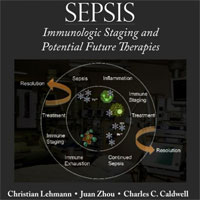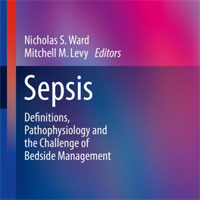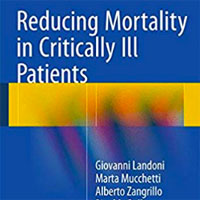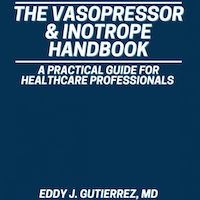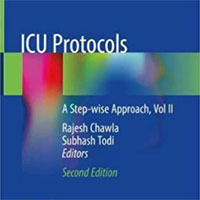Tag: cytokine
Septic Shock Metabolic Subgroups and Clinical Outcome
Three metabolic clusters exist in patients with septic shock with most metabolites differing between clusters and lipid species being most influential. Cluster proportions evolved over time with a high metabolite group... read more
Leptin and Linterlukin-6 Relationship and Influence of Mortality in Sepsis
High leptin levels might counteract the adverse prognostic effect of elevated IL-6 on septic mortality. At the same IL-6 level, leptin could predict septic mortality. Leptin might be a protecting factor for men and gender-different... read more
TNF-α, PCT, IL-8, and HBP Prognostic Value Combined with APACHE II Score in Sepsis Patients
Serum TNF-α, PCT, IL-8, and HBP levels influenced sepsis patient prognosis, and their combined detection with APACHE II score provided a high predictive value for patient outcomes. Patients were divided into sepsis and... read more
Cytokeratin-18 Levels in COVID-19 Patients
This study analyzed 176 samples, including 63 ICU-admitted patients and 88 non-ICU-admitted patients. A substantial difference was found between the AST and CK-18 levels of the patients receiving ICU care and those who did... read more
Managing Recurrent Septic Shock – Dual Blood Purification with CytoSorb and oXiris
This case report presents a patient with recurrent septic shock who experienced significant clinical improvement after receiving adjunctive treatment with a combination of continuous renal replacement therapy (CRRT) using... read more
Cellular Therapy with Mesenchymal Stromal Cells in Sepsis
Cellular therapy with mesenchymal stromal cells (MSCs) is a promising therapeutic modality in sepsis. Positive effects are mainly associated with frequent infusions and the dose of 1 × 106 cell/kg. Larger scale studies... read more
Personalizing Beta-blockade in Septic Shock
Clinical trials provide only part of the necessary framework for clinical decision-making. In practice, a detailed understanding of each patient’s hemodynamic profile is essential. We believe that the echocardiography-guided... read more
Blood Eosinophils Matter in Post-COVID-19 Pneumonia
Preliminary results showed that a eosinophil increase during hospitalization could be a potential predictor of pulmonary sequelae in surviving patients after COVID-19 pneumonia. Despite the protective role of eosinophils,... read more
Ineffectiveness of Therapeutic Plasma Exchange – Last Resort in Severe COVID-19
Patients severely infected with SARS-CoV-2 showed fluctuations in inflammatory parameters despite TPE treatment; CRS was not suppressed by TPE; and this treatment did not confer survival benefit in this patient group. A... read more
Disease Progression Associated Cytokines in COVID-19 Patients with Deteriorating and Recovering Health Conditions
Understanding the immune response to COVID-19 is challenging due to its high variability among individuals. To identify differentially expressed cytokines between the deteriorating and recovering phases, we analyzed the Electronic... read more
Corticosteroid Treatment and Survival in Critically Ill COVID-19 Patients
Our multinational study identified three distinct clinical COVID-19 phenotypes, each exhibiting marked differences in demographic, clinical, and immunological features, and in the response to late and short-term corticosteroid... read more
Ketones Alleviates COVID-19-related ARDS
In this randomized controlled trial, supplementation with beta-hydroxybutyrate improved inflammatory biomarkers and reduced the length of hospitalization in adults with COVID-19–related acute respiratory distress syndrome... read more
Sepsis-induced coagulopathy: a matter of timeline
Leone et al. have nicely outlined the most frequent questions about thrombocytopenia in sepsis. Besides thrombocytopenia, sepsis indeed induces numerous pathophysiological changes. Among these, the acute-phase response... read more
Secondary Bacterial Pneumonia is the Key Factor in COVID-19 Fatalities Not Cytokine Storm
A recent study found that secondary bacterial pneumonia, rather than the much-discussed “cytokine storm,” is a significant factor in COVID-19-related fatalities. Almost half of the patients who required mechanical... read more
High-Dose Dexamethasone vs. Tocilizumab in COVID-19 Pneumonia
Our study findings discourage the use of high doses of dexamethasone in the management of moderate to severe COVID-19 ARDS. The routine use of such high doses to mitigate the inflammatory cytokine storm in these patients... read more
The Clinical Diagnosis and Treatment for New Coronavirus Pneumonia
This book is a practical manual for anti-COVID-19. It is not only with the reference to the result of modern medical science, patients' situation, but also take the deployment of medical resources into consideration. Content... read more
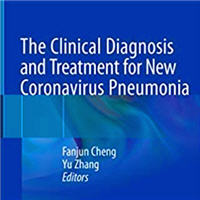
Higher CRP Rise Not Related To Cytokine Response
The higher C-reactive protein (CRP) rise with late parenteral nutrition (PN), explained by the early macronutrient deficits, did not relate to cytokine responses and thus did not reflect more systemic inflammation. Instead... read more
Anti-interleukin Drugs Effect on COVID-19 Patients
Drugs targeting IL-1 or IL-6 did not shorten the time to clinical improvement in this sample of patients with COVID-19, hypoxic respiratory failure, low SOFA score, and low baseline mortality risk. Between April 4, and... read more
Can Early Cytokine Profile Discriminate Between GPB and GNB?
Sepsis is a principal cause of death in critical care units worldwide and consumes considerable healthcare resources. The aim of our study was to determine whether the early cytokine profile can discriminate between Gram-positive... read more
Differential Dynamics of Peripheral Immune Responses to Acute COVID-19 Infection in Older Adults
In this study, peripheral blood mononuclear cells from young and old patients with COVID-19 were examined phenotypically, transcriptionally and functionally to reveal age-, time- and severity-specific adaptations. Gene... read more
TLR2 senses the SARS-CoV-2 envelope protein to produce inflammatory cytokines
The innate immune response is critical for recognizing and controlling infections through the release of cytokines and chemokines. However, severe pathology during some infections, including SARS-CoV-2, is driven by hyperactive... read more
Sevoflurane in Murine Peritonitis-induced Sepsis
Sevoflurane exerts various protective effects in two murine peritonitis-induced sepsis models. These protective effects were linked with a functional adenosine A2B receptor. Sevoflurane reduced the neutrophil counts in... read more




